


Author
Mhairi Sim
Published
May 2025



Author
Mhairi Sim
Published
May 2025



Author
Mhairi Sim
Published
May 2025


Key takeaways
Table of contents
In year 4, learners are finishing off learning all their times tables. A table they’ll cover this year is the notoriously tricky 6 times table.
Before getting started with learning the 6 times tables, it’s helpful for kiddos to be familiar with their 3 times table. They can use the factors of the 3 times table to work out the 6 times table by doubling them..
Our helpful guide to learning the 6 times table includes three fantastic teacher-tested tips and some competitive 6 times table games too! Let’s dive in and master this challenging times table!
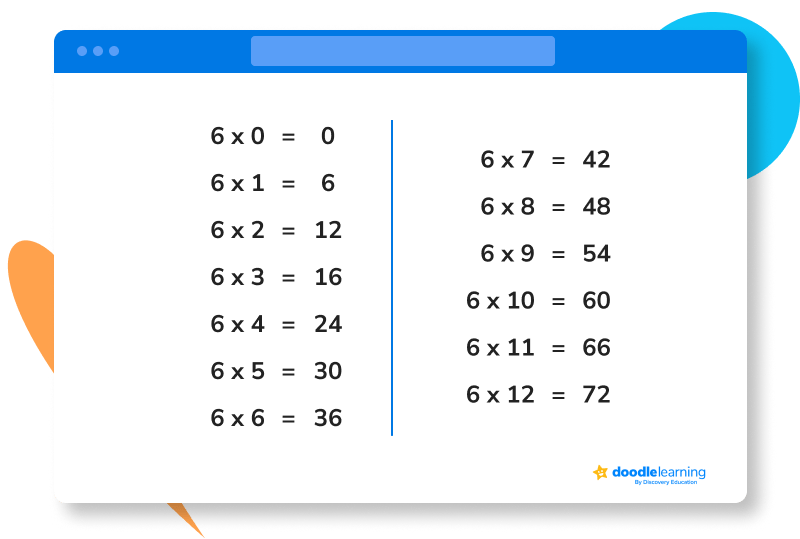
Unlock unlimited maths questions
Put your skills to the test with fun exercises + maths games that are proven to boost ability!
Try DoodleMaths for free!
Select a year group
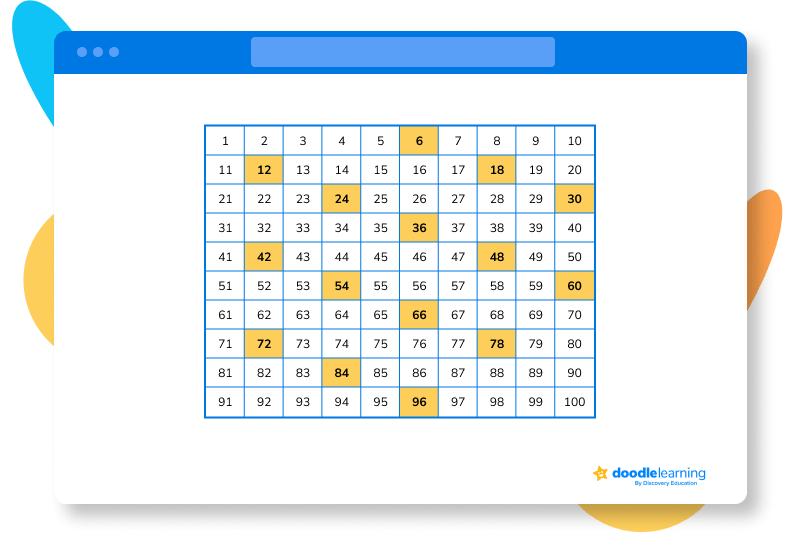
There are a few tips and tricks for learning the 6 times tables that can boost learners’ confidence. Take a look at the ones we’ve gathered below and then try them out for yourself!
A simple way to learn the 6 times tables (and a method I still use myself) is for kiddos to use their knowledge of other, easier times tables to help them.
The key to understanding this method is realising that multiplying a number by 6 is the same as multiplying it separately by two numbers which add up to 6. This is often referred to as the distributive law of multiplication.

Learners will start by partitioning 6 into two different numbers – in this example, we’ve chosen 5 and 1. They’ll then multiply 7 by each of these numbers in separate calculations. Finally, they’ll add their answers together to give the final answer for 6 x 7, which is 42.
Kids can also use their knowledge of the 3 times table here, then double their answer.
This is by far my favourite 12 times table strategy, and I’m sure my students would say the same. It’s so simple and quick that it does seem a bit like magic!
The first pattern worth noting in the 6 times table is that the products are all even numbers. This means that they will all end in either 0, 2, 4, 6, or 8.
The second pattern is a little trickier to spot, but is so helpful for kiddos once it’s pointed out! When an even number is multiplied by 6, the product will end in the same even number.
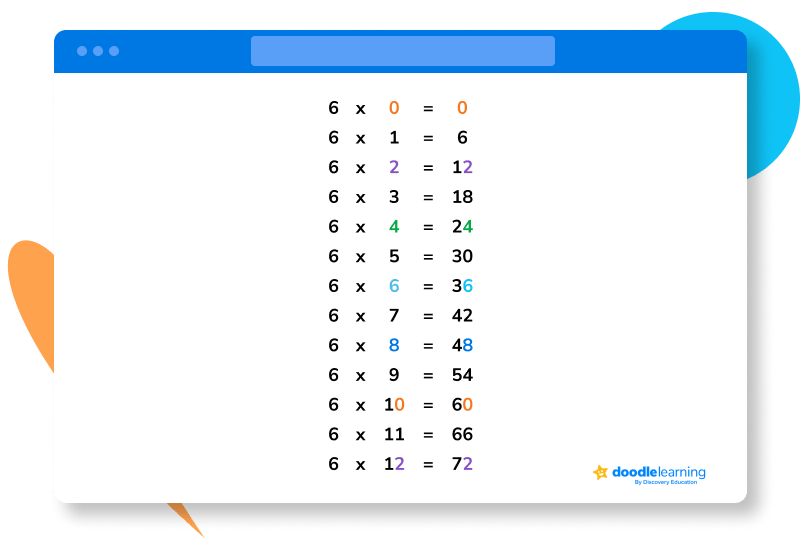
This pattern applies for the 6 times table up to 100 and beyond, so there’s no limit to how useful this tip is!
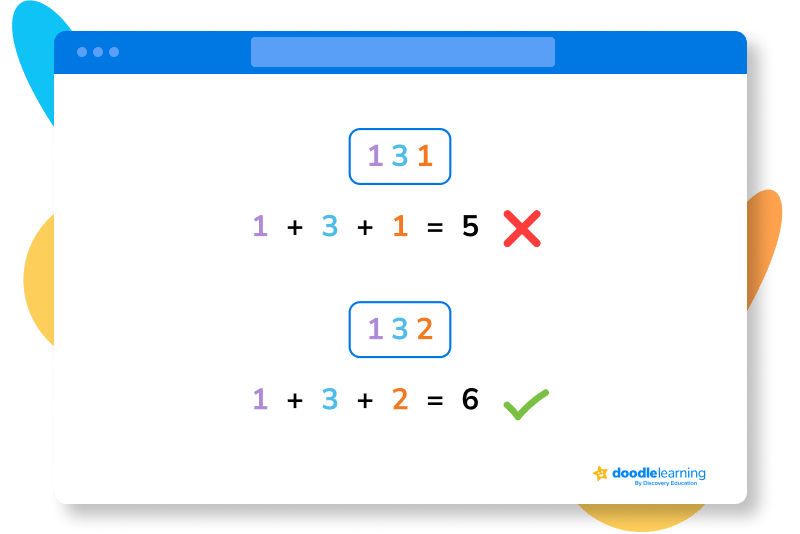
Another fantastic way to master multiplication 6 times table with your students is to play some fun games. Here are three 6 times table games that will get your kids excited and in the zone for learning this challenging table!
To start, get your kids to stand in a circle. They’ll then take turns calling out numbers, starting from one, but will substitute numbers in the 6 times table for the word ‘Fizz’.
To make things even harder, you can introduce a second times table, and learners will say ‘Buzz’ instead of the products of that times table. If the number is a product of both of the target times tables, they’ll say ‘Fizz Buzz’.
If we use the 6 times table (fizz) and the 4 times table (buzz), your kiddos should be following a pattern like this:
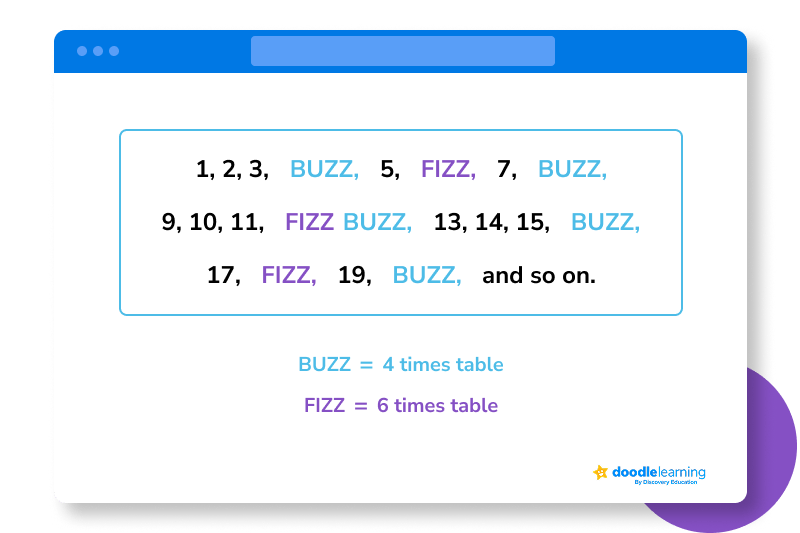
This is one of my all-time favourite 6 times table games, but play at your own risk – it’s bound to get competitive!
Kids stay seated at their desks, and one pupil will stand up to start the game. This student will stand behind another child, and both will race to give the quickest answer to a 6 times table question read by the teacher or a third taskmaster student.
If the student standing up is fastest, they’ll move on to stand behind the next child. If the seated student wins, they’ll swap places with their competitor and move on to challenge the next student.
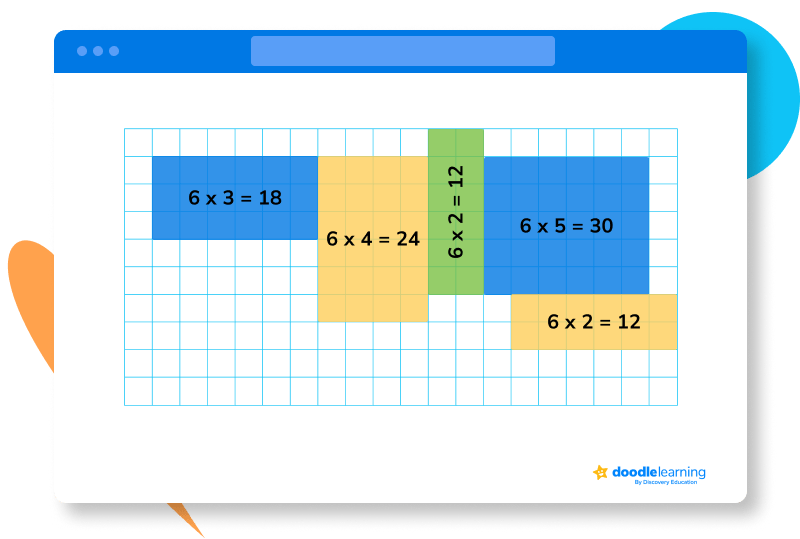
All you’ll need to play the multiplication grid game is two dice, some squared paper and a different coloured pen or pencil for each player.
Using the two dice, players roll and then multiply the number they end up with by 6. Once they have their total, they’ll colour in that number of squares on the grid. The only rule is that all their squares must be connected.
Your kids will carry on taking turns until there is no more space on the page, and the winner is the person whose colour is taking up more of the squares!
If computer games are more appealing to your learner, then our fantastic DoodleLearning maths app could be the perfect solution! There are thousands of games and activities to help them learn their 6 times table and more.
DoodleMaths is an award-winning app that’s filled with thousands of questions and games exploring multiplication, division and more! Plus, get free access to DoodleTables with any DoodleMaths subscription!
Designed by teachers, it creates each child a unique work programme tailored to their needs, doubling their progression with just 10 minutes of use a day. Try it for free!


Ready to give it a go?
Put your knowledge to the test with these no-risk practice problems to get you ready for the classroom!
Have a go at some 6 times table practice problems to put our strategies to the test!
5. Complete the sequence:
0, _, 12, 18, __, 30, __, __, 48, __, 60, 66, __
5. 0, 6, 12, 18, 24, 30, 36, 42, 48, 54, 60, 66, 72

Parents, sign up for a DoodleMaths subscription and see your child become a maths wizard!

Book a chat with our team
If you’d like to use Doodle’s browser version, please visit this page on a desktop.
To log in to Doodle on this device, you can do so through our apps. You can find out how to download them here: